(grouped by topical interest)
Photos by Connie Barlow, 2005
ABOVE RIGHT: Connie at the base of the champion tree in 2005. She was exploring the trees with Lee Klinger, who recognized signs that the base trunk of the tree might actually have begun growth as two separate stems. The photos below offer details to provide clues. Ultimately, only a full core or disk of the tree after it falls will definitively answer the question.
ABOVE RIGHT: Photo shows shows where the main stem clearly splits into two.
ABOVE RIGHT: 180 degrees from the previous photo, from a distance it is easy to see how steeply the champion tree is leaning. (Notice Lee Klinger at its base.)
ABOVE RIGHT: American Forests lists a new champion (nominated in 2014) that is in Big Basin State Park.
ABOVE: Both photos are of Torreyas in the old railroad station area. Seeds are prolific on the full-sun low branches in the photo above left. The specimen above right may be the largest in the railroad station area.
Contact us
RETURN TO California Torreya Main Page
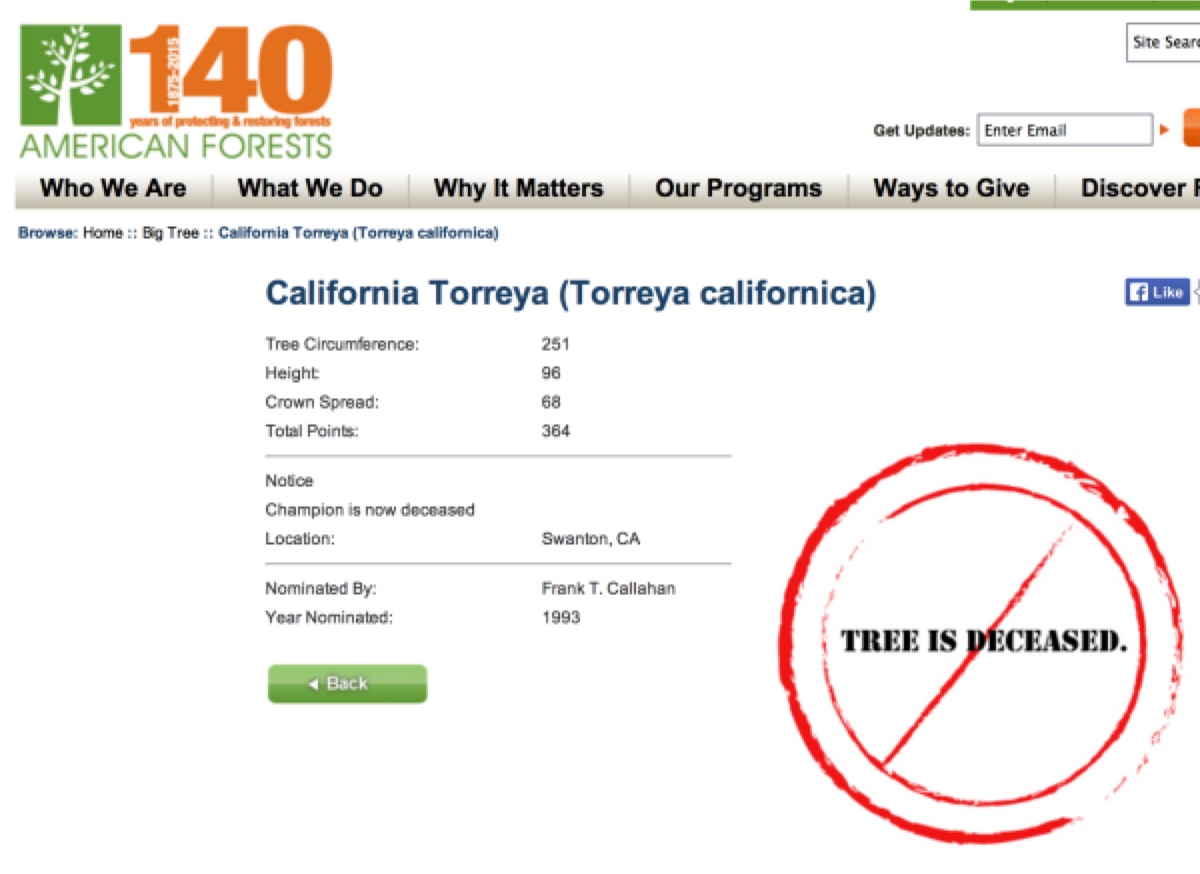
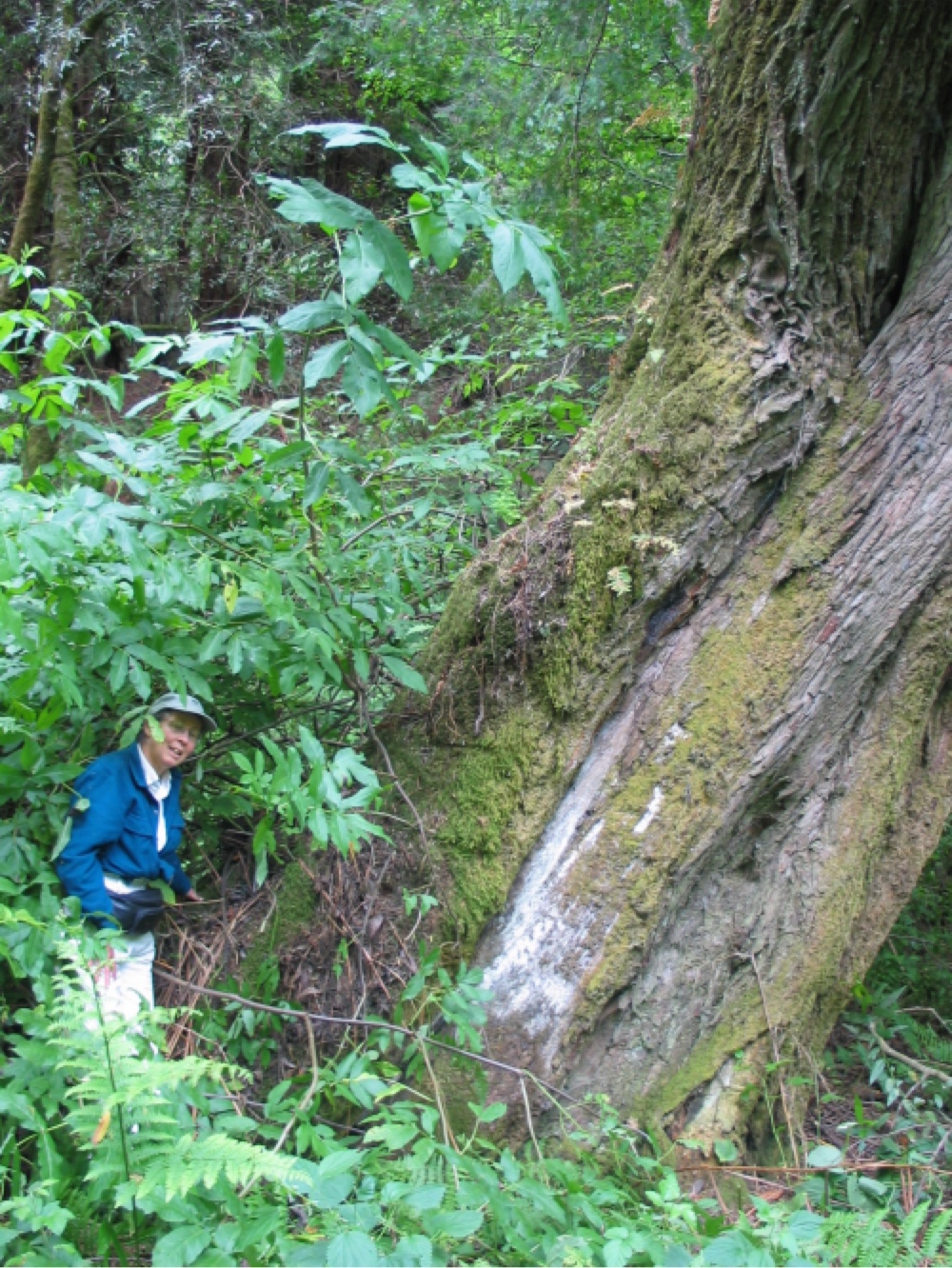
ABOVE LEFT: In 2014 the champion tree of California Torreya (originally nominated by Frank Callahan in 1993) was officially declared deceased. That was 10 years after Connie Barlow visited the tree (as well as others of its kind in wild forest north of Santa Cruz: Scotts Creek watershed).
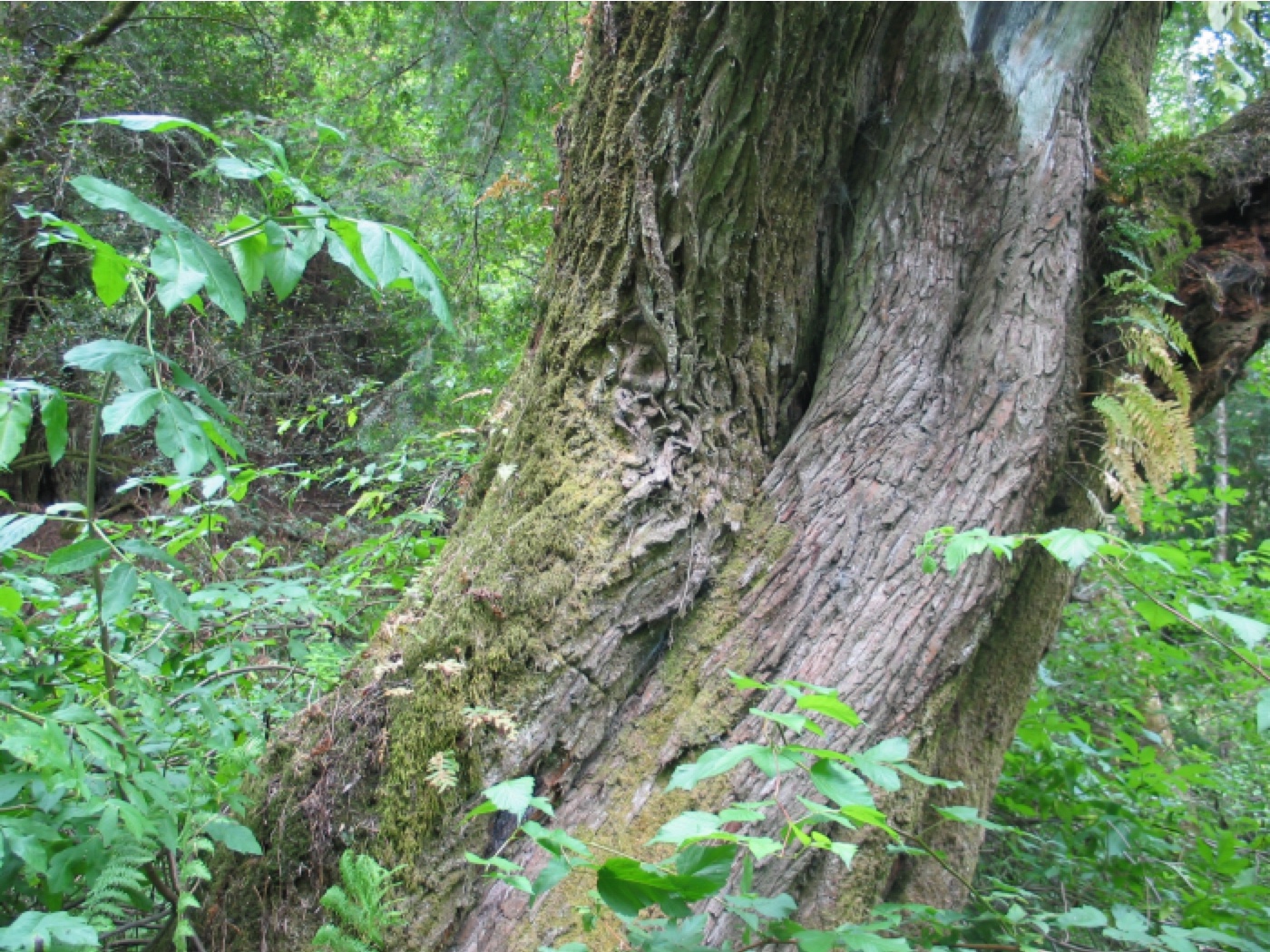
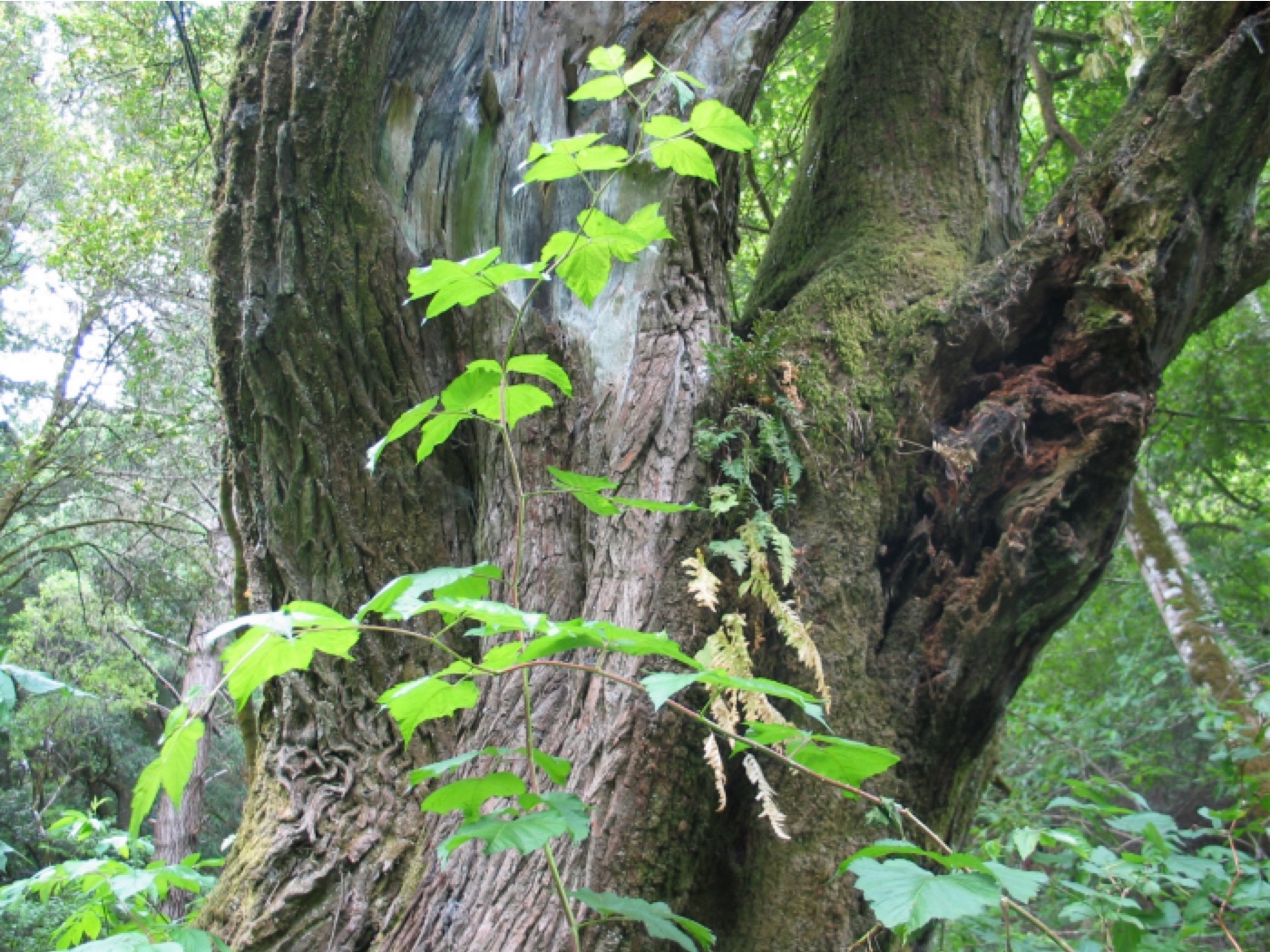
ABOVE LEFT: Photo shows from just above the ground to where first side branch is visible, upper right corner.
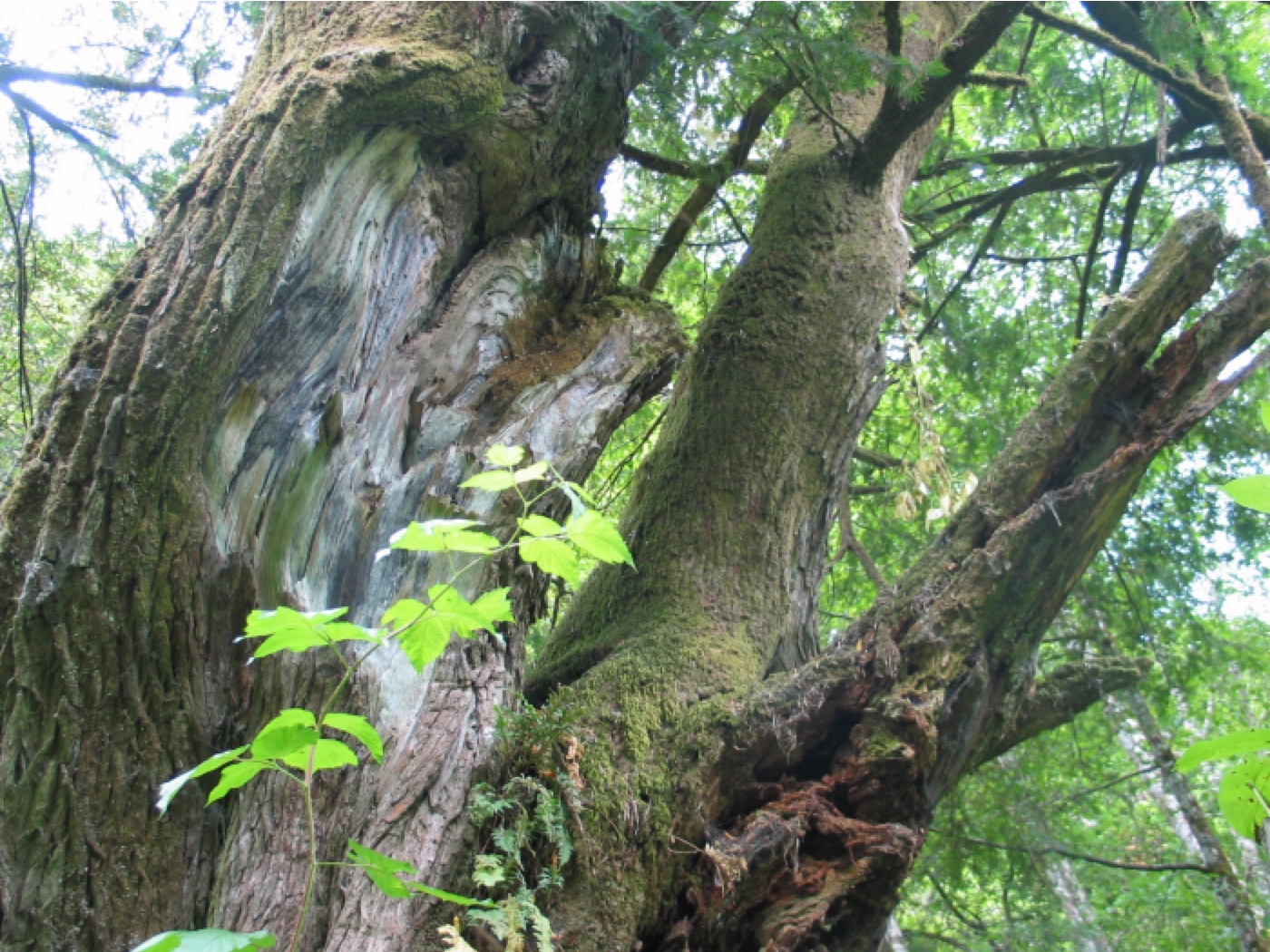
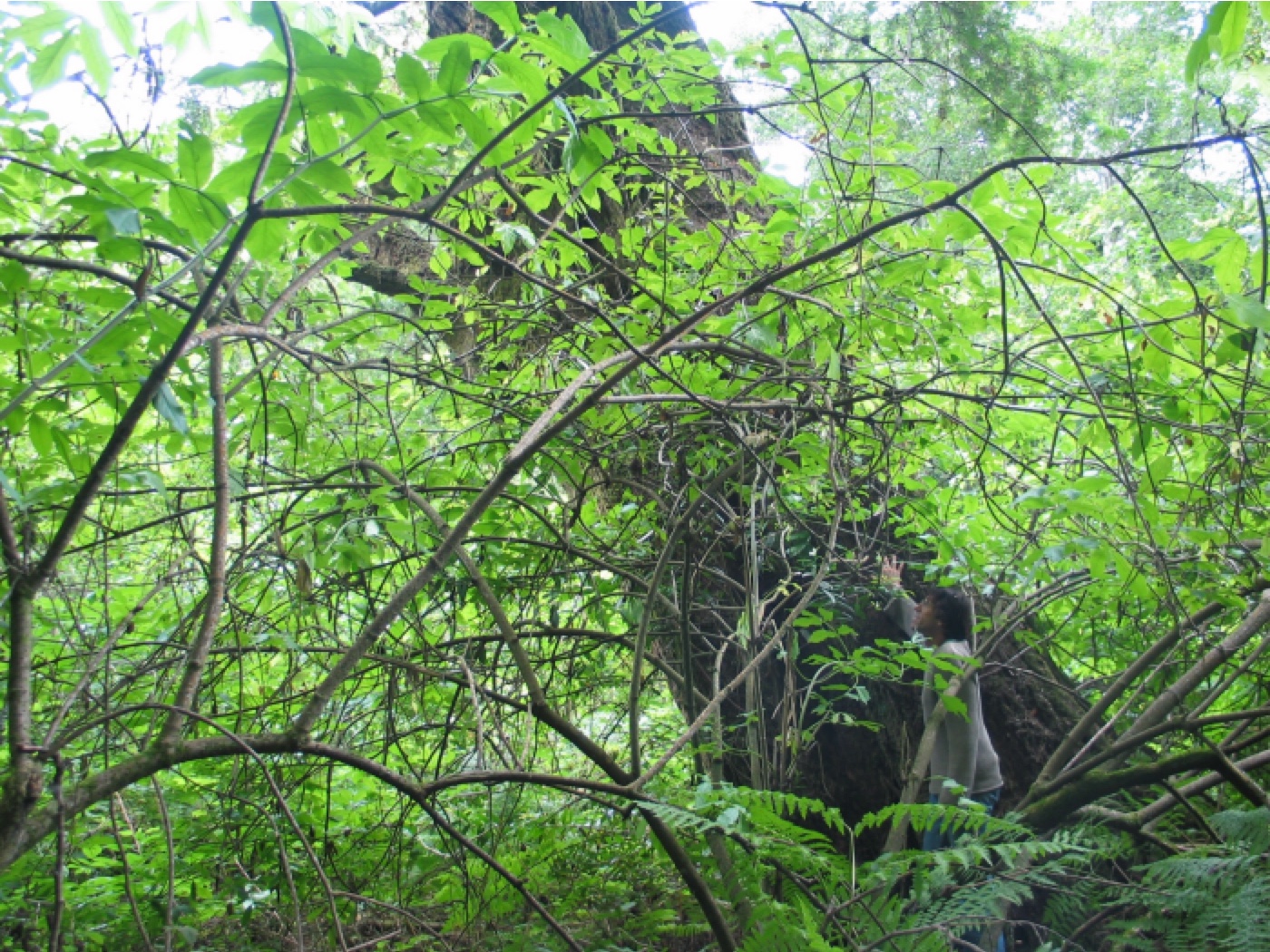
ABOVE LEFT: A good view of the split in vertical stems.
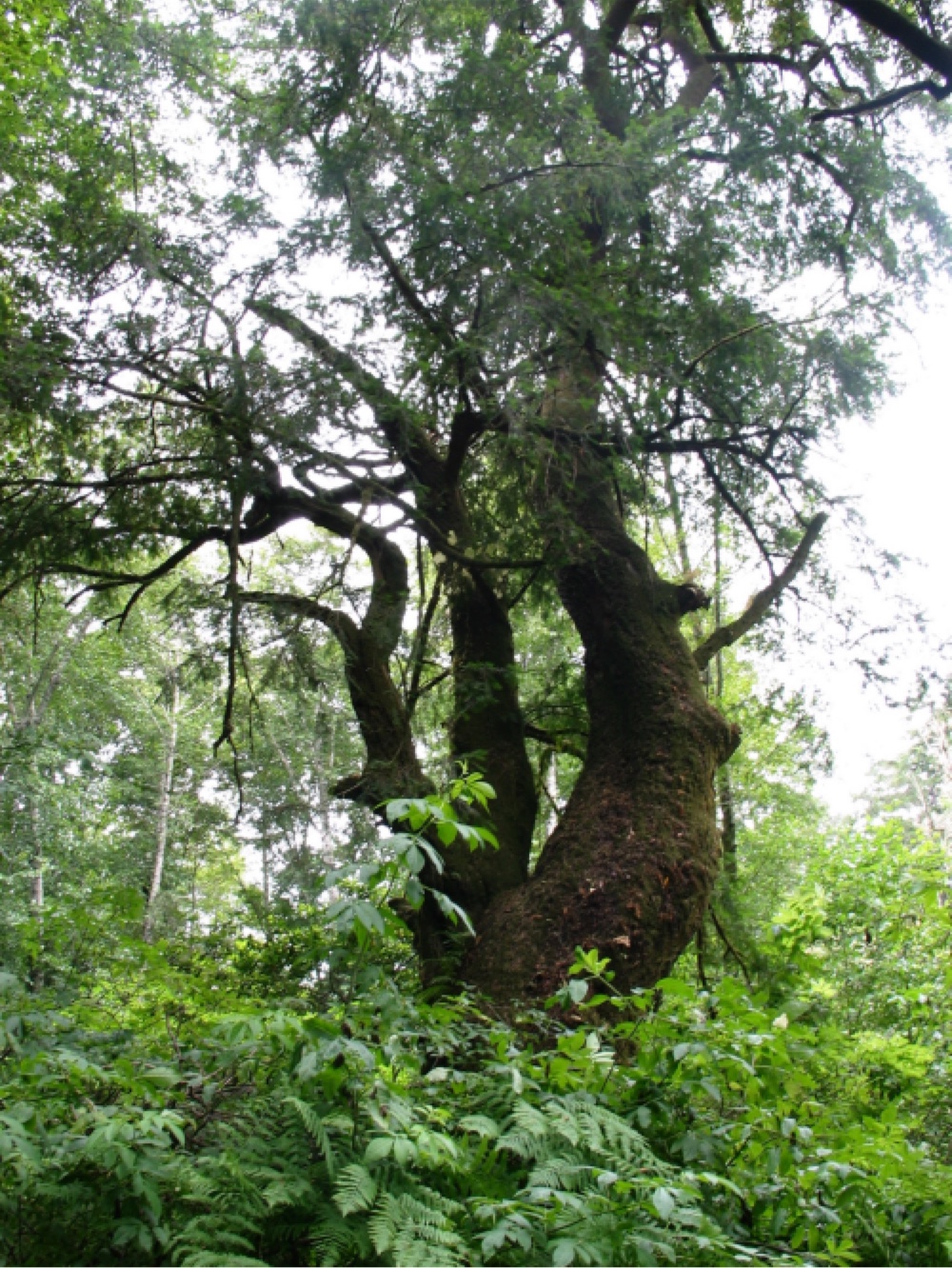
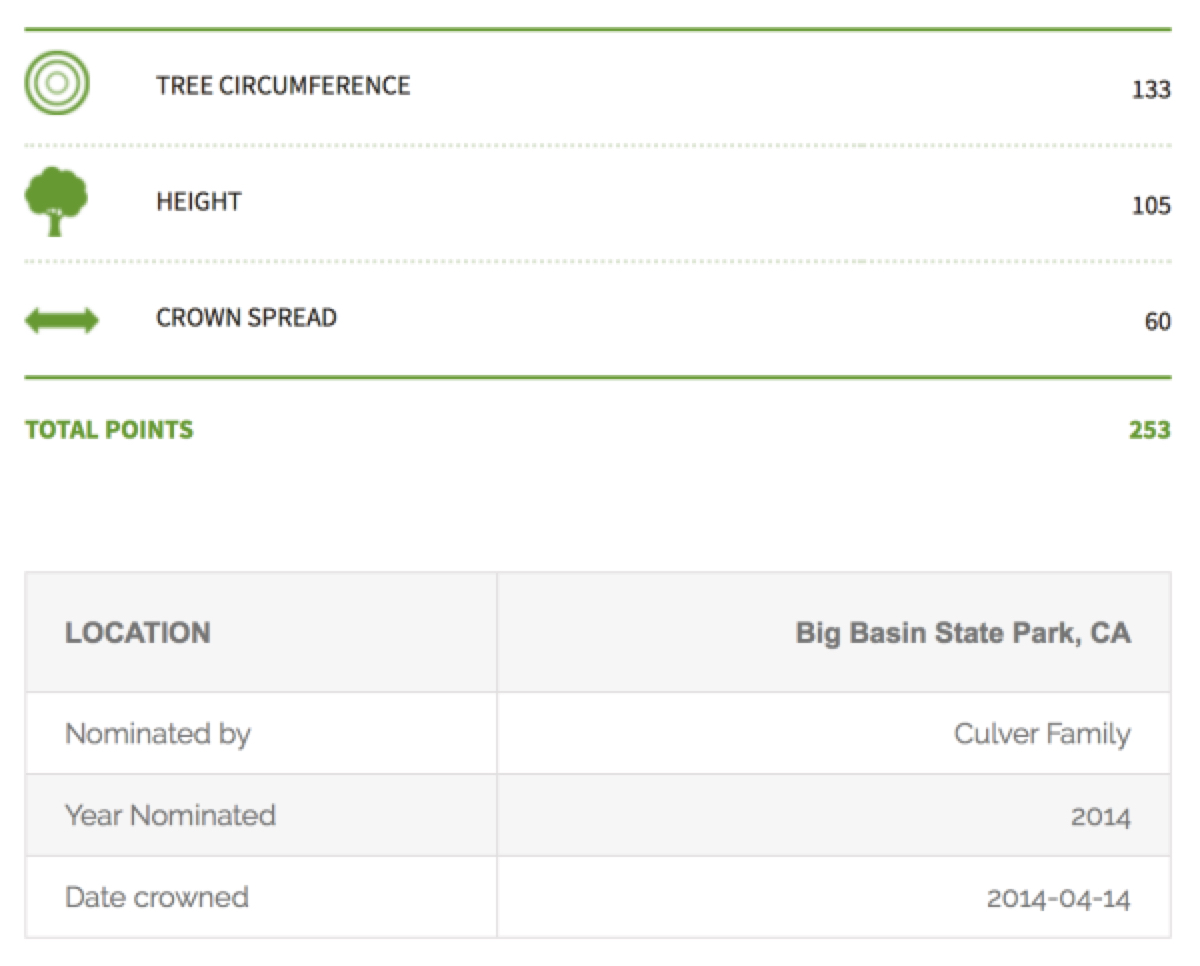
ABOVE LEFT: View of the old champion from the mid-split upwards.
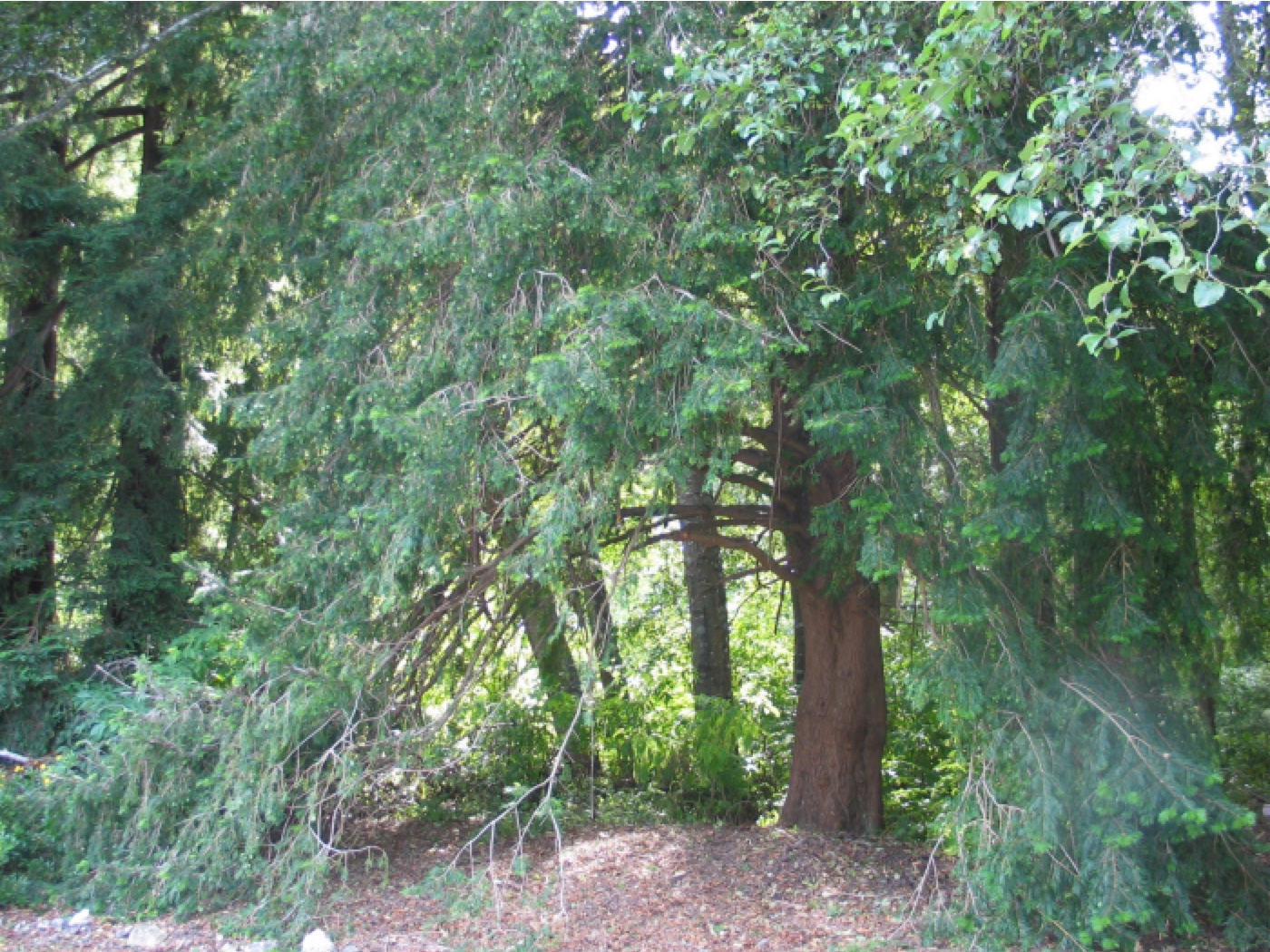
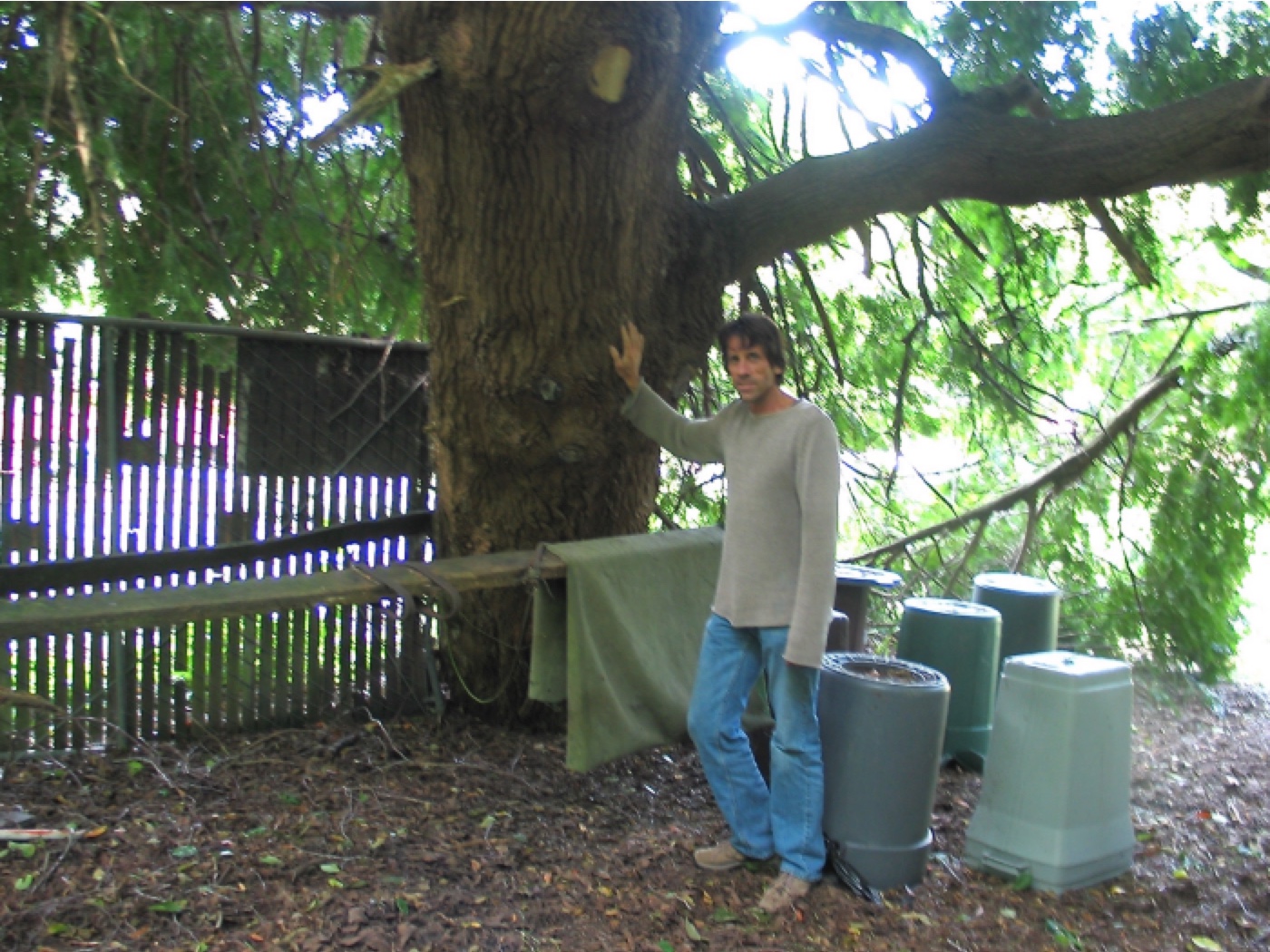
Both Connie Barlow and Frank Callahan think there may be a tree in the Scotts Creek Watershed that outscores the new champion listed in Big Basin.
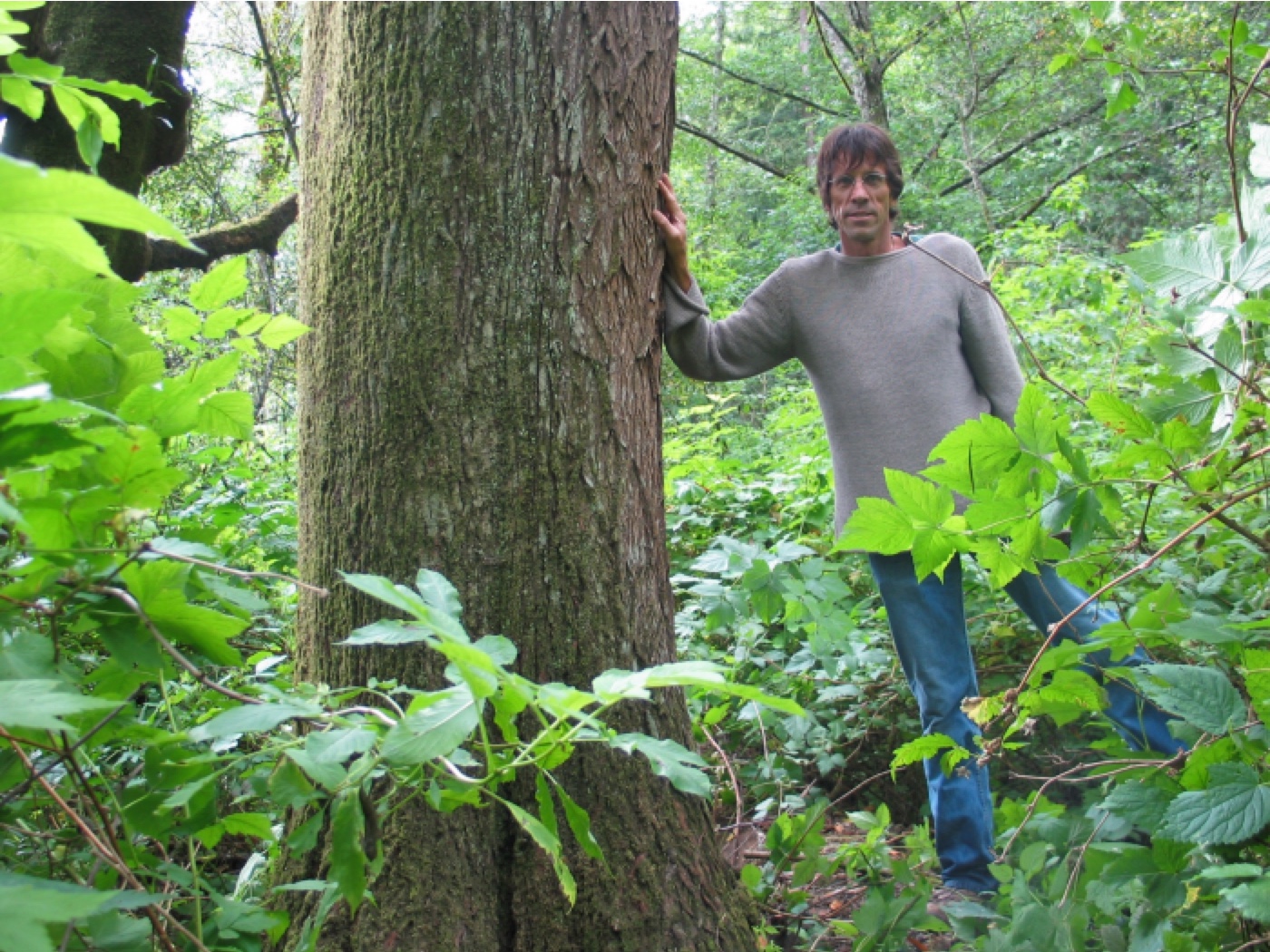
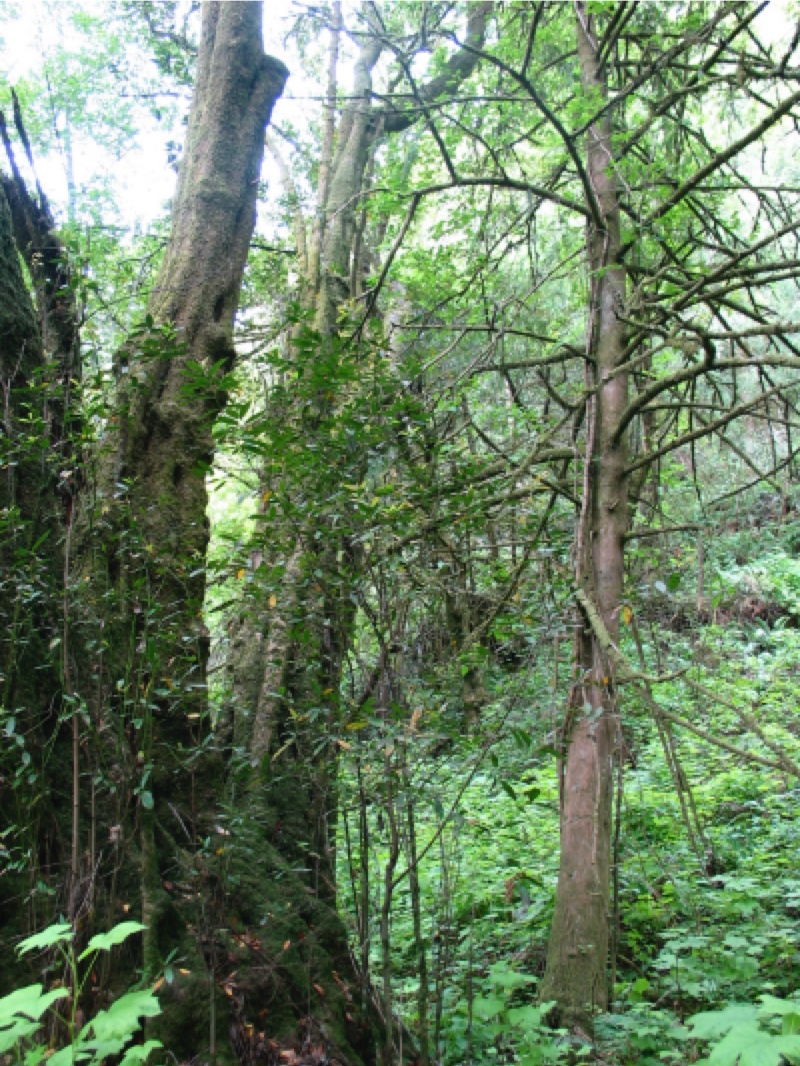
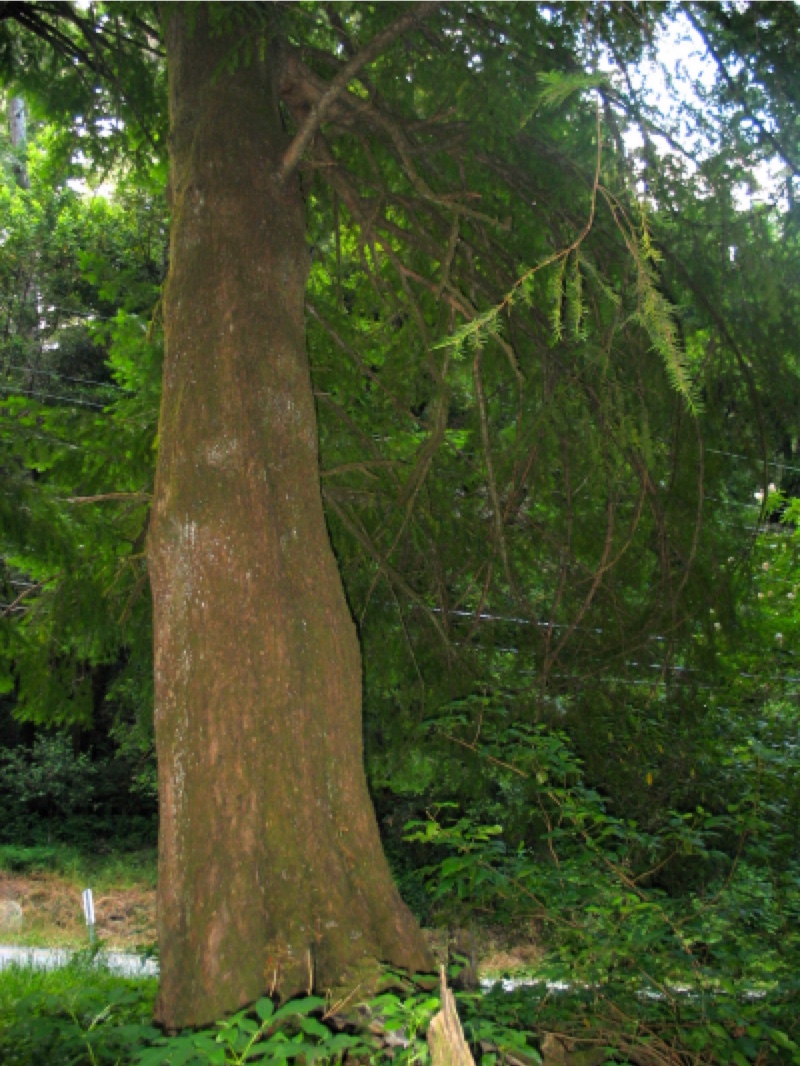
ABOVE: Other large Torreya trees in the Scotts Creek watershed. These three specimens are all in or near the canyon bottom of Scotts Creek, and easily accessible via the road that parallels the creek. Notice that the photo far right show the tree is near the road. The middle photo has the Torreya along the right; lower branches are bare of foliage, but the crown is healthy.
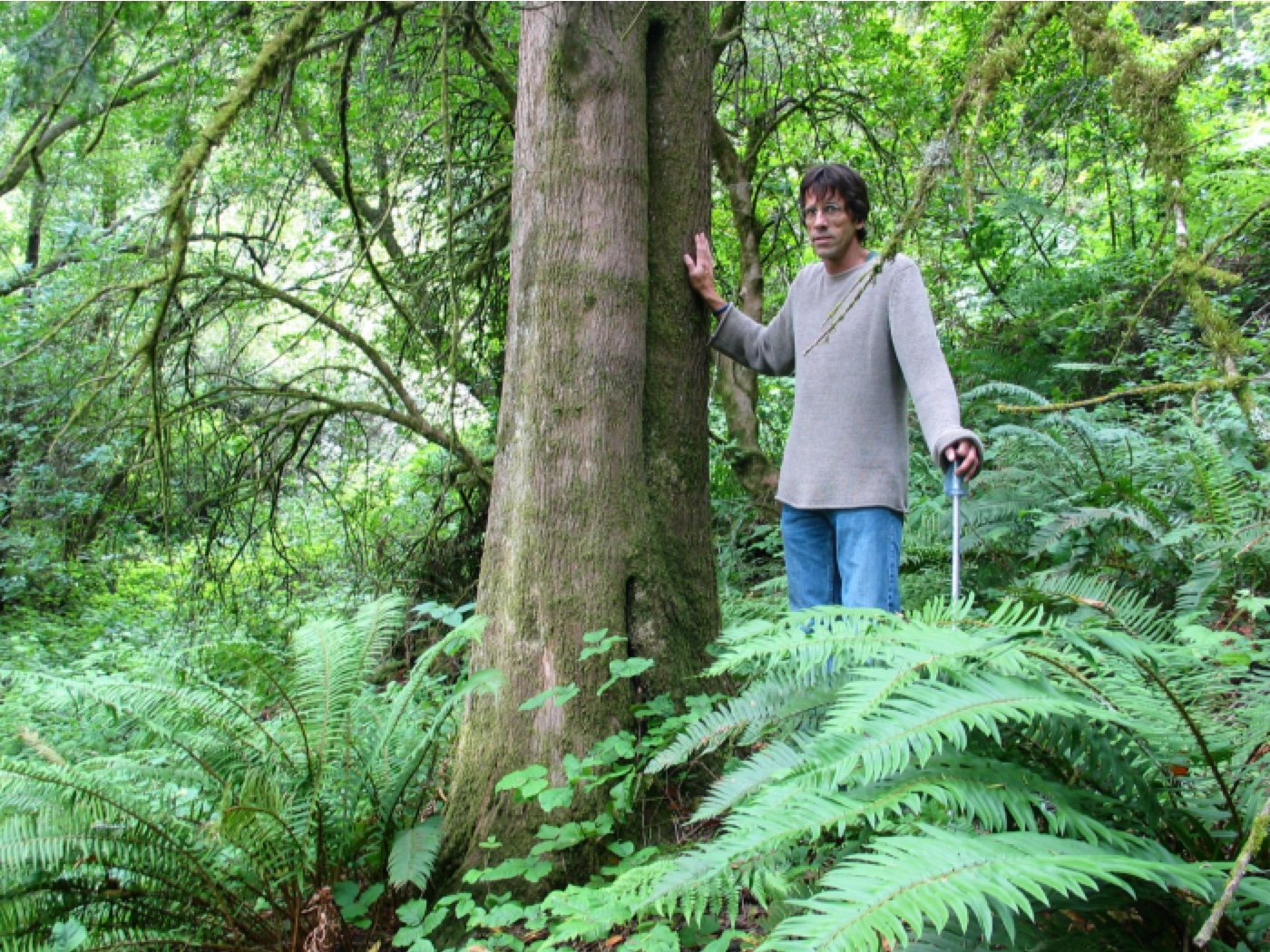
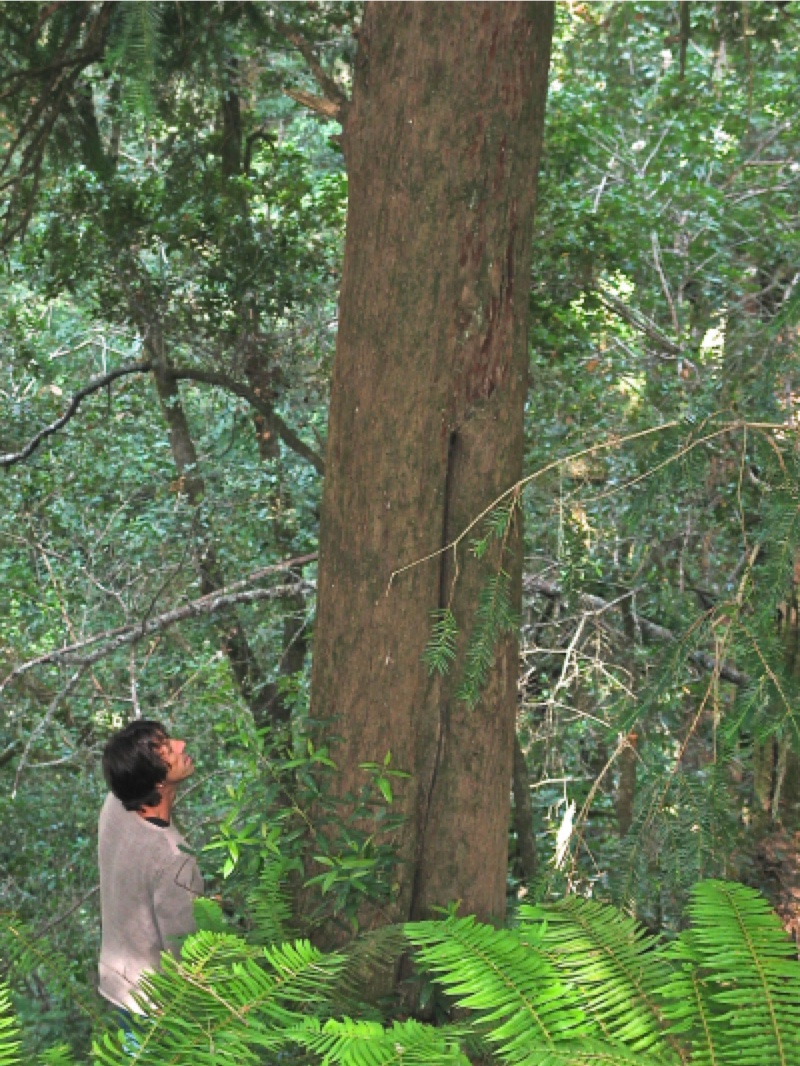

ABOVE: Do these three Torreya trees show evidence of having trunks that began as mergers of two stems?
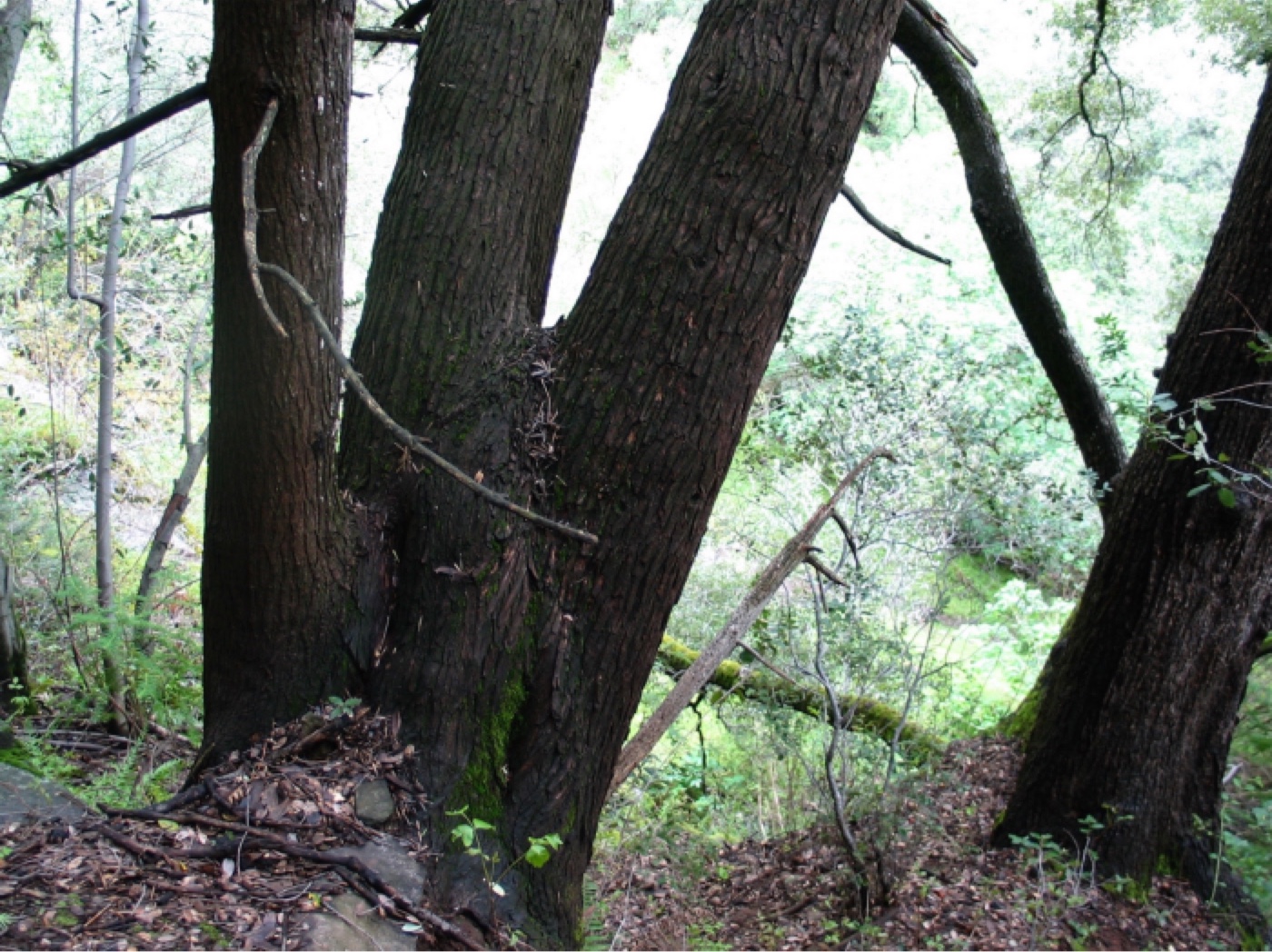
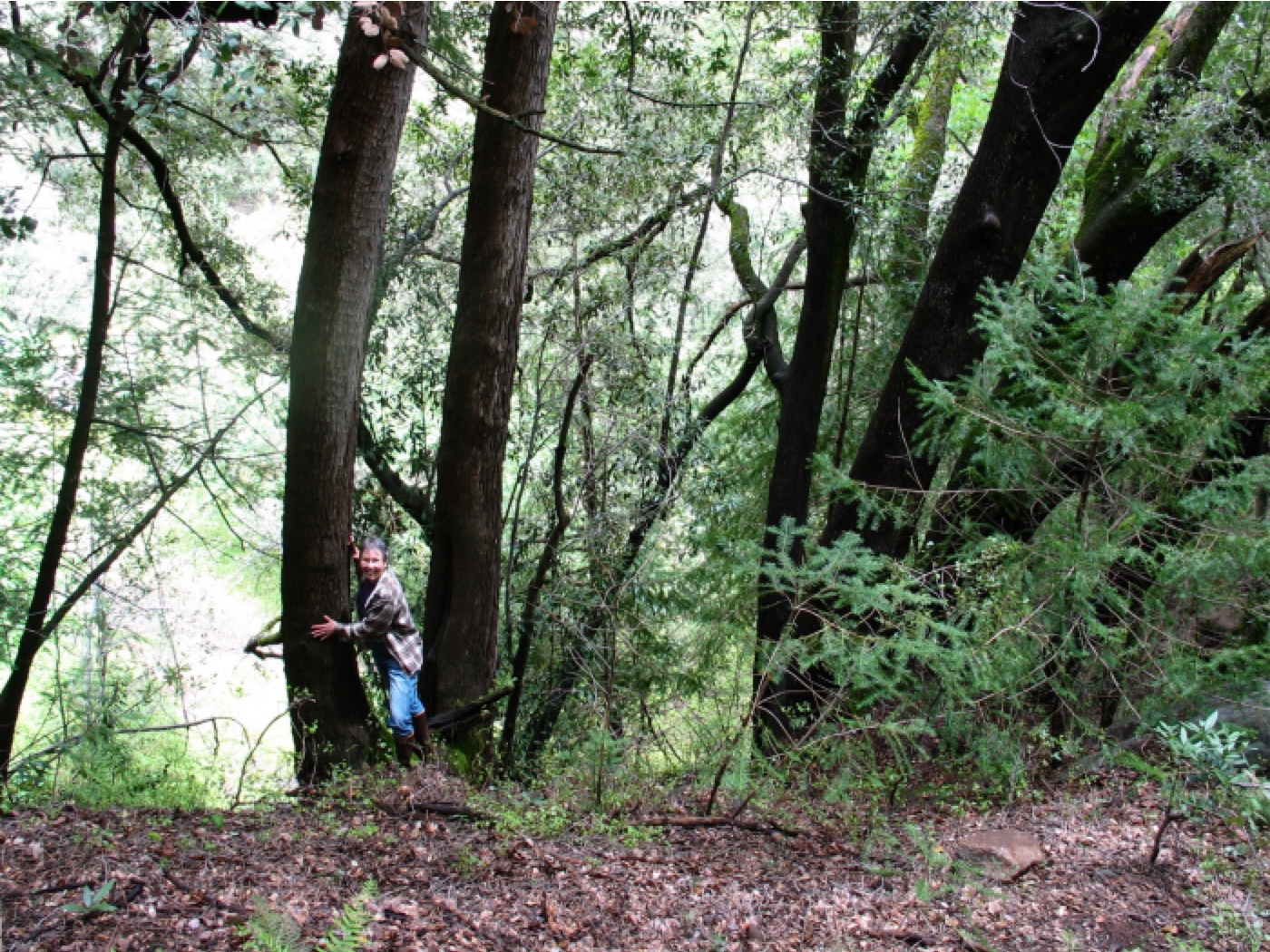
ABOVE: Photos 2005 at Sequoia / Kings Canyon National Park. LEFT: Evidence of a 3-stemmed Torreya beginning to merge. RIGHT: Connie with 2 distinct stems from what may be a common root base grown during a prior generation of main stem(s); seedling of a Torreya visible foreground right. BOTH TORREYAS AND REDWOODS EXCEL AT RESPROUTING from a basal lignotuber (and most will have one or more small basal stems in leafy green — ready to shoot upward if the main stem is mortally injured.
